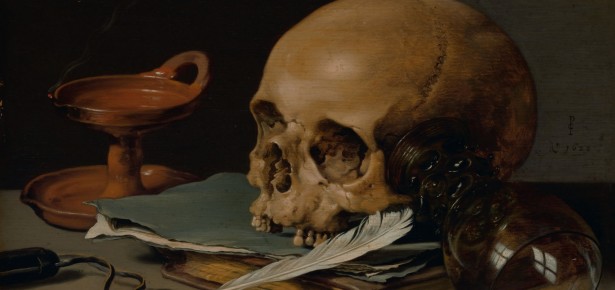
The Art of Memory has now become a familiar, if not necessarily always well understood or articulated, cultural reference point. From Thomas Harris’s creation in the Hannibal Lecter series of novels to the BBC’s adaptation of Sherlock Holmes featuring Benedict Cumberbatch, the mysteries involved in practicing and mastering the Art of Memory continue to capture the imagination of readers and audiences worldwide. Such mnemonic technique was also a subject of great interest in early modern England; merchants, preachers, educators, and courtiers alike, were fascinated by the supposed powers endowed by mastering one’s ability to remember and retrieve information. The basic technique, the architectural approach, relies upon the student of memory constructing a series of places (loci) in memory by walking around a building and remembering places in that building in a certain order. The student then attaches images (imagines) to these places, and thus, when called upon to make a speech he or she can move in their mind’s eye from place to place in the building and retrieve the images and their associated content stored there. Such a technique requires diligence, concentration, and much repetition; it is a painstaking process, but one which has been demonstrated to be an effective method for the storage and retrieval of information. The Memory Arts in Renaissance England, an anthology of over seventy excerpts of writings about memory ranging from 1500 to 1700, seeks to capture and shed light upon how memory and mnemonics was understood and written about.
One such writer interested in the Art of Memory is Stephen Hawes, a celebrated court poet and Groom of the Chamber to Henry VII. Now largely forgotten, Hawes was for a time one of the most distinguished poets in England. A disciple of the late medieval poet John Lydgate, Hawes committed to memory the works of many English poets. His high position at court and prodigious memory were noted by a biographer, Antony à Wood, over a century later. Chief among Hawes’s literary accomplishments is a long allegorical poem, The Pastime of Pleasure, first printed by Wynken De Worde in 1509. Attesting to its early popularity, further editions followed in 1517, 1554, and 1555. Unsurprisingly Hawes adopted the measure used by Lydgate, rhyme royal, considered antiquated by the age of Shakespeare and thereafter. Indeed, Wood noted that Hawes’s writing was distinctly unfashionable by the mid-seventeenth century: though his Pastime ‘in the time of Henry VII and VIII was taken into the hands of all ingenious men, [it] is now thought but worthy of a ballad-monger’s stall’.
In Pastime Hawes reveals his understanding of ‘memorial art’. The poem’s principal character, Graunde Amoure, is instructed in the Seven Liberal Arts, and from Dame Rhetoric learns of the five parts of rhetoric: invention, disposition, elocution, pronunciation, and memorative. In the last of these passages, we find the first extended discussion of the Art of Memory printed in English. Hawes notes that if an orator wishes to tell ‘many a sundry tale one after another treatably’ then he must memorize ‘sundry images . . . like to the tale’. When the time comes to give a speech, the orator, in ‘due order, manner, and reason’ can move from one image to another and recollect his tale. With a nod to the reader (both early and modern), Hawes freely admits that the method might seem as first ‘obtuse’. But Hawes notes that ‘by perfect study’ of the Art of Memory, the student of memory will be able to deliver speeches eloquently. As the example of Hawes reveals, the memory arts cut into court and intellectual culture to a significant extent. Mnemonic technique could make careers; the ability to hold court and sway public opinion via oratorical display was greatly admired in the period. As the Memory Arts anthology demonstrates throughout, the study of memory may help to explain or even redeem minor canonical and historical figures.
Latest Comments
Have your say!